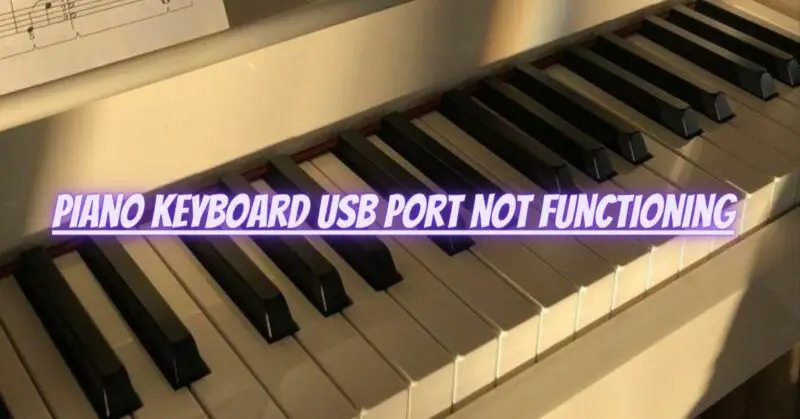The USB port on a piano keyboard is a crucial feature that allows you to connect the instrument to a computer, use MIDI interfaces, or transfer data. When the USB port stops functioning, it can be frustrating and limit your ability to access various digital capabilities. Several factors can lead to USB port malfunctions, but in this article, we’ll explore common causes and offer practical solutions to troubleshoot and resolve the issue.
1. Faulty USB Cable or Connection:
A damaged or faulty USB cable can result in an unstable or non-functional connection between the piano keyboard and the computer or external devices.
Solution:
- Inspect the USB cable for visible damage or fraying. If you notice any issues, replace the cable with a new one.
- Make sure the USB cable is securely plugged into both the piano keyboard’s USB port and the computer or external device’s USB port.
2. Driver Issues:
Outdated or corrupted USB drivers can lead to connectivity problems and prevent the piano keyboard from communicating with the computer.
Solution:
- Check if the piano keyboard requires specific USB drivers to be installed on your computer. Visit the manufacturer’s website and download the latest drivers compatible with your operating system.
- Install the updated drivers and restart your computer to ensure proper recognition of the piano keyboard.
3. USB Port Power Supply:
Some USB ports may not provide enough power to support the piano keyboard’s functions.
Solution:
- Try using a powered USB hub or a separate power adapter for the piano keyboard to ensure sufficient power supply to the USB port.
- Avoid using USB ports that share power with other high-power devices, as this may cause power fluctuations and affect the piano keyboard’s functionality.
4. USB Port Hardware Issues:
Physical damage or malfunction within the USB port itself can cause connectivity problems.
Solution:
- Carefully inspect the USB port for any visible signs of damage, bent pins, or foreign objects. If you find any issues, do not attempt to fix it yourself; instead, seek the assistance of a qualified technician.
5. Compatibility Issues:
Incompatibility between the piano keyboard and the computer or external device can lead to USB port malfunction.
Solution:
- Verify that the piano keyboard’s USB specifications (e.g., USB 2.0 or USB 3.0) are compatible with the USB ports on your computer or external devices.
- If your piano keyboard is compatible with different USB modes (e.g., USB MIDI or USB storage mode), ensure you have selected the appropriate mode.
6. Update Firmware (Digital Pianos):
For digital pianos with USB ports, updating the firmware can often resolve connectivity issues.
Solution:
- Check the manufacturer’s website for firmware updates related to the USB functionality of your piano keyboard.
- Follow the provided instructions to update the firmware.
7. Seek Professional Assistance:
If the USB port continues to malfunction despite your efforts, or if you suspect internal issues with the piano keyboard’s electronics, seek professional assistance.
Solution:
- Contact the manufacturer’s customer support or a qualified piano technician for a thorough inspection and repair of the USB port.
Conclusion:
Troubleshooting a non-functioning USB port on a piano keyboard involves checking the USB cable and connection, updating drivers and firmware, ensuring power supply compatibility, and verifying hardware integrity. By following the steps outlined above, you can often identify and resolve the issue, restoring the USB port’s functionality. If the problem persists or involves complex internal issues, seeking the expertise of a qualified piano technician or the manufacturer’s support team will help diagnose and address the underlying cause. With a functional USB port, you can once again enjoy the convenience and versatility of connecting your piano keyboard to a computer or external devices for enhanced musical creativity and productivity.


